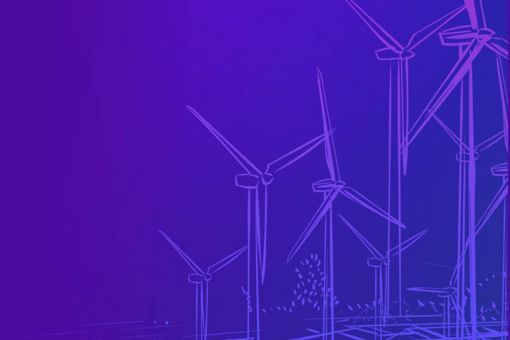
The recent disruptive evolutions in the energy market had a considerable impact on the bottom line of many organizations. This effect was observed across different sectors and did not solely affect energy intensive organizations. Some organizations had to close one or more facilities as the surge in production costs could not be compensated by an equal increase in product prices.
Although energy prices today are less elevated, and gas storages in Europe have been filled in the short run, the underlying factors causing the uncertainty of both energy supply and prices are still present. In response, the EU adopted the Electricity Market Design reform (2024) to stabilize energy prices, enhance consumer protection, and accelerate renewable integration. Going forward, organizations will have to structurally mitigate the related risks. Although the root cause of the current inflation is linked to the increase in energy prices, macro-economic evolutions are impacting the energy market as well. Any evolutions, such as the recent instability of the financial sector, will therefore have to be closely monitored. The impact of both macro-economic conditions and potential energy price changes for organizations will have to be managed.
The uncertainty is further fed by the ongoing geopolitical tensions between Russia and Ukraine since considerable increases have been observed, and are still expected, in European defense budgets. With Russia being a pivotal country for energy supplies in the past, the impact of the war in Ukraine is fundamentally changing the European energy landscape and is accelerating the energy transition.
The EU’s REPower EU plan has significantly reduced Russian fossil fuel imports and expanded LNG infrastructure and interconnectors to diversify supply. However, the question remains whether sufficient gas supply can be secured for subsequent winter periods, and if Europe can and wants to keep relying on Russian Liquified Natural Gas – a supply that is yet to be impacted by the war. Under the EU Gas Storage Regulation (2022/1032), member states must fill 90% of gas storage capacity by November each year to ensure winter preparedness.
More unknown but equally important, factors such as drought and the rise in water temperature are also looming as the energy sector is highly dependent on water during its production process. This holds true for conventional energy generation such as nuclear and gas fired plants but also for renewables such as hydropower and hydrogen. It is beyond question that the focus on this water-energy nexus will intensify in the years to come, particularly once the effects of global warming become more visible and broadly understood. The 2024 Water Resilience Initiative by the European Commission calls for integrating water stress into energy planning, particularly for thermoelectric and hydropower assets.
While some organizations focus on market share recovery, energy management within all organizations will need to professionalize in parallel. Front-runners in tackling energy security challenges will not only limit the impact of energy market evolutions on their organization but will also gain a competitive edge. This does not only involve transitioning to renewables and defining a smart energy mix but also achieving unprecedented energy efficiency levels. Any unit of energy which is not consumed, not only supports the energy resilience of your organization but saves costs.

Macro-economic uncertainty
- Do we have a reliable view of our energy demand in the next 5 years?
- What kind of energy sources do we want to use in the future and how much does that differ from our current energy mix?
- What tools are we using to stay informed of the macro-economic situation and of evolutions in the energy market?
- Are we leveraging AI-based forecasting tools to model energy demand and macroeconomic impacts more accurately?
- Which energy-related decisions can be prescribed or delegated, and when does the board or a special committee need to be consulted?
Geopolitical risks
- Do we have a good view of the energy mix in all countries we are active in?
- Who are our critical suppliers, and what options or mitigations do we have if supply is disrupted?
Energy supply uncertainty
- Do we understand how our company would be impacted in the case of unexpected drops in energy availability? Do we apply energy supply related stress tests? Do we know how long we can rely on our stock?
- What is our energy strategy?
- How can this near-term challenge help to accelerate our energy transition journey?
- What other onsite/offsite alternative energy generation opportunities can we pursue?
- Have we considered Power Purchase Agreements (PPAs) to secure long-term renewable energy supply and hedge against price volatility?
- How do we balance between energy supply certainty, the costs of energy transition projects and our decarbonization targets? Do we use scenarios to obtain a view of the different options for our context?
Increased price volatility
- Are we using every available lever to reduce volatility impact such as accelerating the delivery of energy efficiency targets?
- What mandates and commitments do we have, and do they give us the speed to execution we need in volatile markets?
- Do we understand the impact of raising energy prices on our cost base? Do we know which area of our portfolio is mainly impacted? Do we have a view of our main energy consumers?
- Do we understand the energy-related exposures of our customers and what scenarios have we used to stress test?
- Are we able to increase product prices without a substantial loss in market share?
Decarbonization
- How can we align our decarbonization strategy with the EU’s proposed 2040 climate target of 90% net GHG reduction compared to 1990 levels?
- How will we support our employees, customers and communities during these challenging times?
- Do we consider the trade-off between decarbonization and other environmental impacts (e.g. biodiversity) while implementing our energy strategy?
Water scarcity
- In which operations are we using water? How will water scarcity impact us?
- Are we as a company aware of the water-energy nexus and should we monitor this?

- Establish a balanced energy strategy for the next years, which takes both current and future energy supply and demand in scope.
- Maintain ongoing conversations with your suppliers and customers to assess their energy resilience and consider taking actions together.
- Engage with neighboring companies to understand whether efficiencies could be obtained.
- Embed an energy efficiency mindset within your organization.
- Explore circular energy strategies, such as waste heat recovery and industrial symbiosis, to enhance resilience and reduce emissions.
- Incorporate energy monitoring and reporting in all layers of the organization.
- Ensure alignment with the Corporate Sustainability Reporting Directive (CSRD), which mandates disclosure of energy use, efficiency measures, and climate risks starting FY2024.
- Allocate resources to energy transition initiatives and to ongoing monitoring of the impact of energy resilience on your organization.
- Engage energy professionals to stay informed.
- Explore different financing pathways to support the transition.
- Ensure energy investments align with the updated EU Taxonomy to qualify for green financing and meet sustainability criteria.
About the Board Leadership Center
KPMG’s Board Leadership Center (BLC) offers non-executive and executive board members – and those working closely with them – a place within a community of board-level peers. Through an array of insights, perspectives and events – including topical seminars and more technical Board Academy sessions – the BLC promotes continuous education around the critical issues driving board agendas.
Contact us
Explore
Connect with us
- Find office locations kpmg.findOfficeLocations
- kpmg.emailUs
- Social media @ KPMG kpmg.socialMedia




